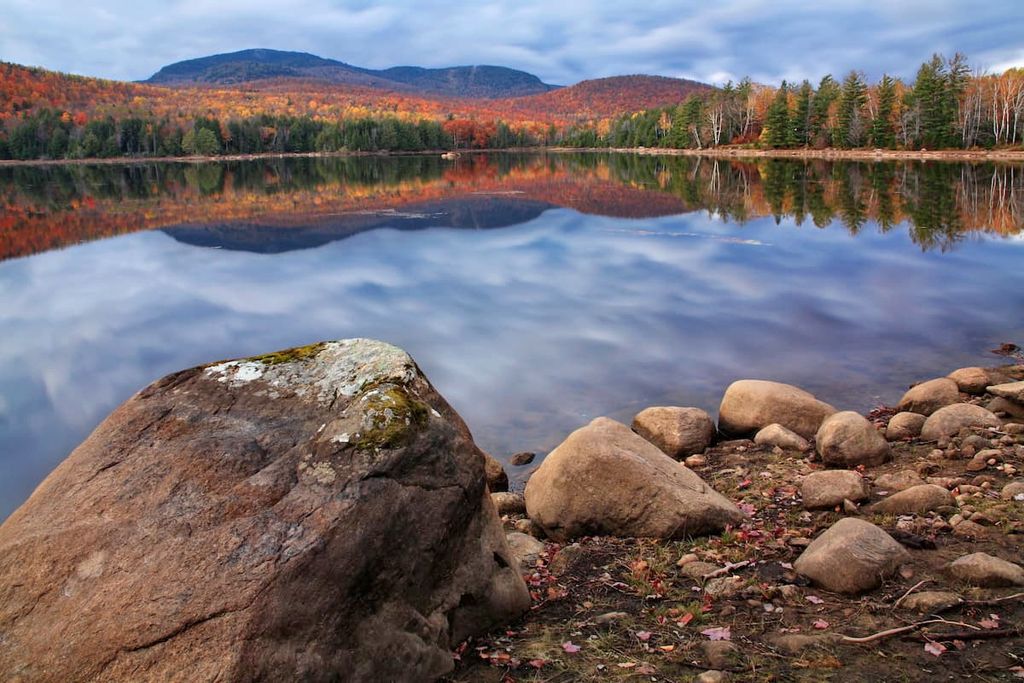Get PeakVisor App
Sign In
Search by GPS coordinates
- Latitude
- ° ' ''
- Longitude
- ° ' ''
- Units of Length

Yes
Cancel
Share ×

Scan the QR code and open PeakVisor on your phone
❤ Wishlist ×
Choose
Delete
Debar Mountain Wild Forest is part of the Adirondack Park in upstate New York, USA, close to the border with Canada. There are 30 named mountains within the forest. The highest point is the summit of Loon Lake Mountain at 3,327 ft (1,014 m) and Debar Mountain is the most prominent mountain, with a prominence of 1,663 ft (507 m) to its 3,317 ft (1,011 m) summit.
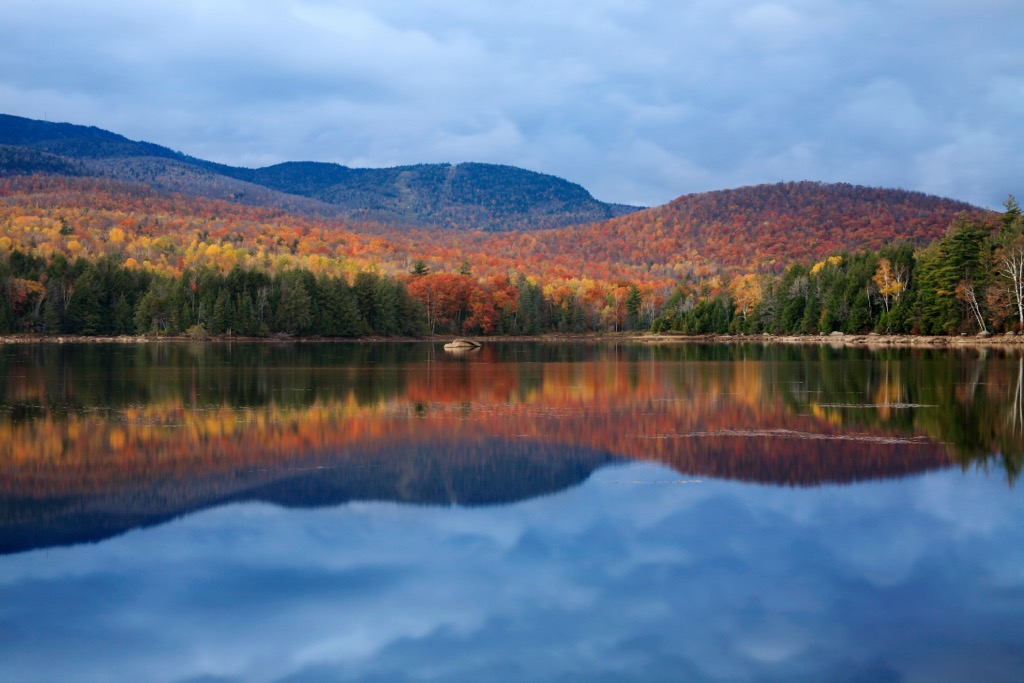
Debar Mountain Wild Forest is part of the Adirondack Forest Preserve and located in upstate New York. It encompasses around 83,000 acres (33,590 hectares) of state and conservation easement land. The majority of the land lies to the east of State Route 30 but a portion lies to the west of the roadway and is part of the Santa Clara Tract Conservation Easement Lands.
The forest contains close to 30 mi (50 km) of trails, five lean-tos, and numerous campsites. Like most of the region, streams, ponds, and lakes abound throughout the forest. Meacham Lake, Rainbow Lake, Osgood Pond, and Lake Kushaqua are some of the largest bodies of water and popular for boating, paddling, and fishing.
Titusville Mountain State Forest, Deer River State Forest, Dunkin’s Reserve State Forest, and Chazy Highlands Wild Forest neighbor Debar Mountain Wild Forest. The wild forests are part of Adirondack Park, a six million acre (2,428,114 hectare) swath of protected forests covering the Adirondack Mountains.
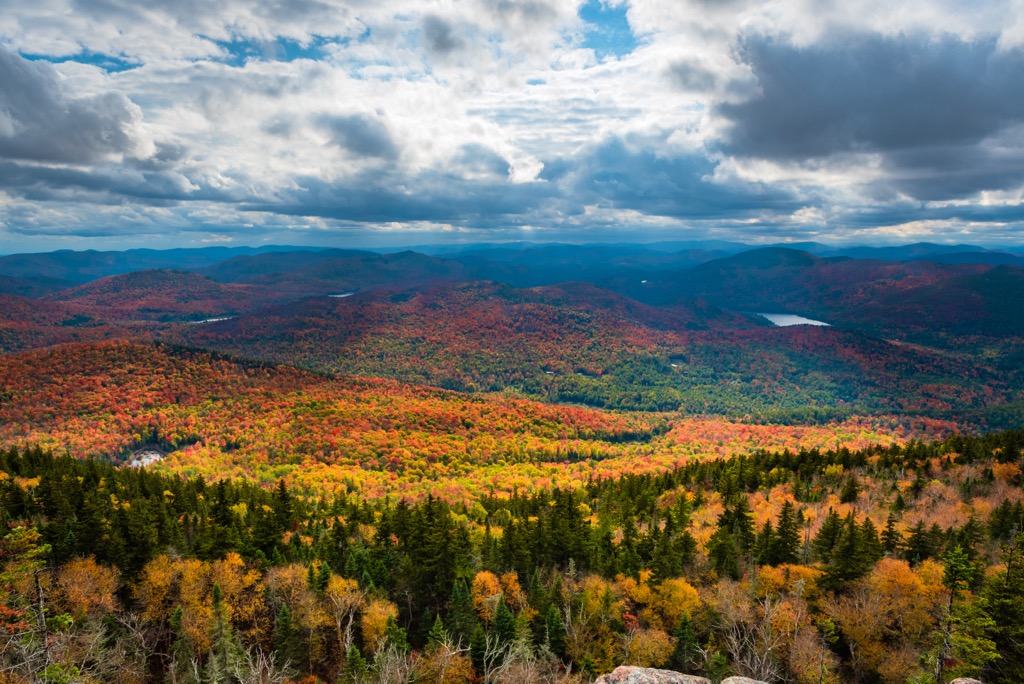
The Adirondack Mountains form a circular dome, rather than an extended range like other major mountain systems in the United States. The dome as we know it emerged about five million years ago and extends 160 mi (260 km) wide and 1 mi (1.5 km) high. Despite being a geologically “new” formation, some of the rocks that comprise it are more than one billion years old.
The oldest rocks date back to the Grenville Mountains. These mountains formed as continental plates collided. The pressure and heat metamorphosed sandstones, limestones, and shales into quartzite, gneiss, schists, and marble. Igneous rocks such as granite and anorthosite formed as magma squeezed through cracks in existing rocks and eventually cooled. The Grenville Mountains were eroded over millions of years and flooded by a warm sea around 500 million years ago.
A quarter of a million years ago, snowpack began accumulating and resulted in the formation of glaciers. As glaciers melted and froze with fluctuations in temperature, they left a dramatic imprint on the landscape. They carved out glacial cirques, scattered erratics (rocky debris that was previously frozen into glaciers), and left behind depressions that filled with water to become the ponds the region has today.
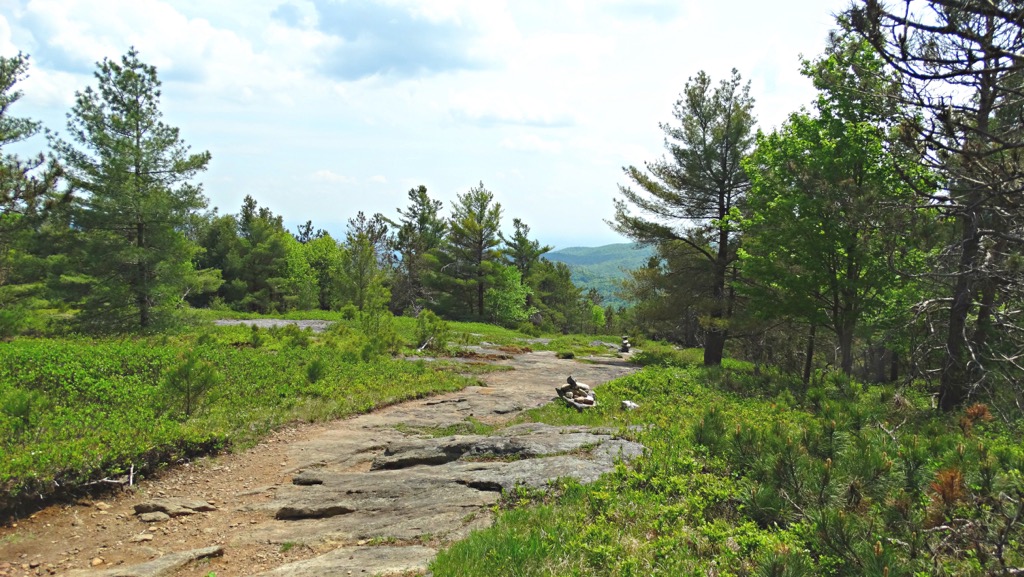
The mineral soil in the region only developed since the end of the last ice age about 10,000 years ago. It is generally sandy and infertile. However, organic matter that has built up along the forest floors creates much healthier and more robust soils.
Habitats within the Debar Mountain Wild Forest include boreal forest, hardwood forest, bog, and alpine. Boreal forests contain mainly pines, spruces, and larches. The hardwood forests of the Adirondacks consist of sugar maple, yellow birch, eastern hemlock, American beech, and eastern white pine. Wildflowers such as trout lily, Dutchman’s breeches, trillium, and dwarf ginseng bloom in the spring and share the forest floor with ferns.
The thick forest and abundant water sources support a rich array of wildlife. Moose, black bears, beavers, coyotes, river otters, white-tailed deer, and little brown bats call the forest home. Numerous reptiles and amphibians thrive in the moist forest floor and near creeks and ponds. Some of these species include eastern newts, spotted salamanders, blue-spotted salamanders, gray treefrogs, wood frogs, and American toads.
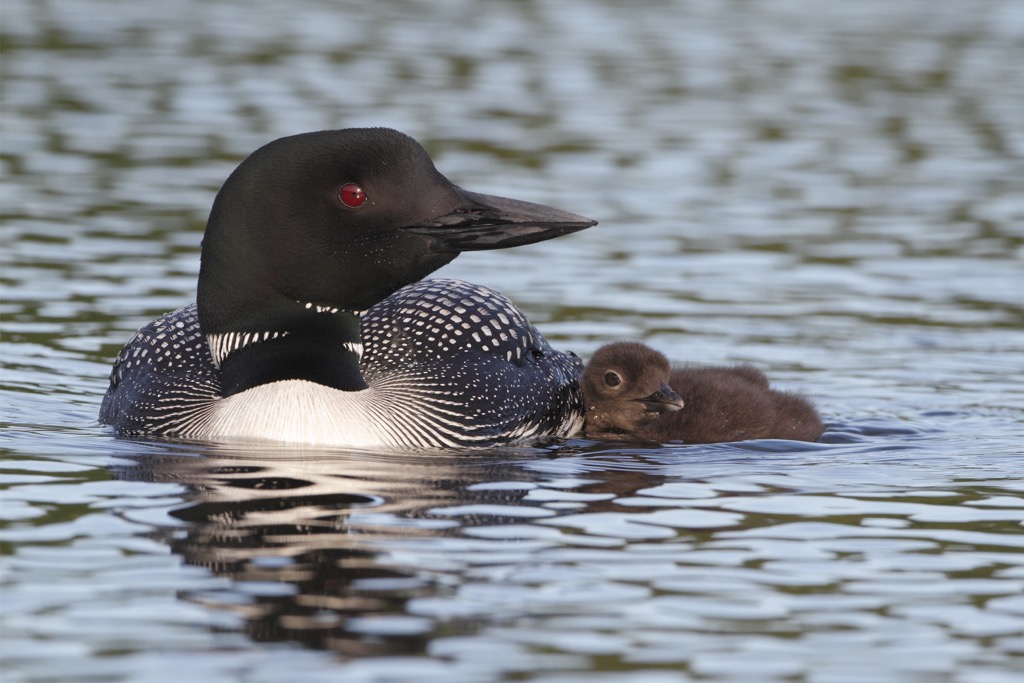
Many birds take to the trees and waterways including bald eagles, common loons, peregrine falcons, osprey, great horned owls, great blue herons, wild turkeys, eastern bluebirds, black-capped chickadees, and red-breasted nuthatches.
The wild forest falls within the traditional territory of the Mohawk of the Iroquois Confederacy. The Iroquois stewarded the region for centuries, utilizing and defending their use of the abundant natural resources around the Saint Lawrence River, the Hudson River, and Lake Champlain.
The French claimed first contact in the region as early as 1534. Metal goods from the French were often exchanged for furs from the Native Americans. As more European traders and settlers entered the region over the following centuries, they brought over disease that decimated local Native American populations.
Following the American Revolution, logging took off in the region. The state needed revenue to discharge war debts and the forests were an abundant resource. By the mid-1800s, concern was growing about the depletion of the forests. Logging combined with the paper, tanning, and charcoal industries were damaging vital forest watersheds. This reduced the soil’s ability to hold water which led to increased topsoil erosion and longer periods of flooding.
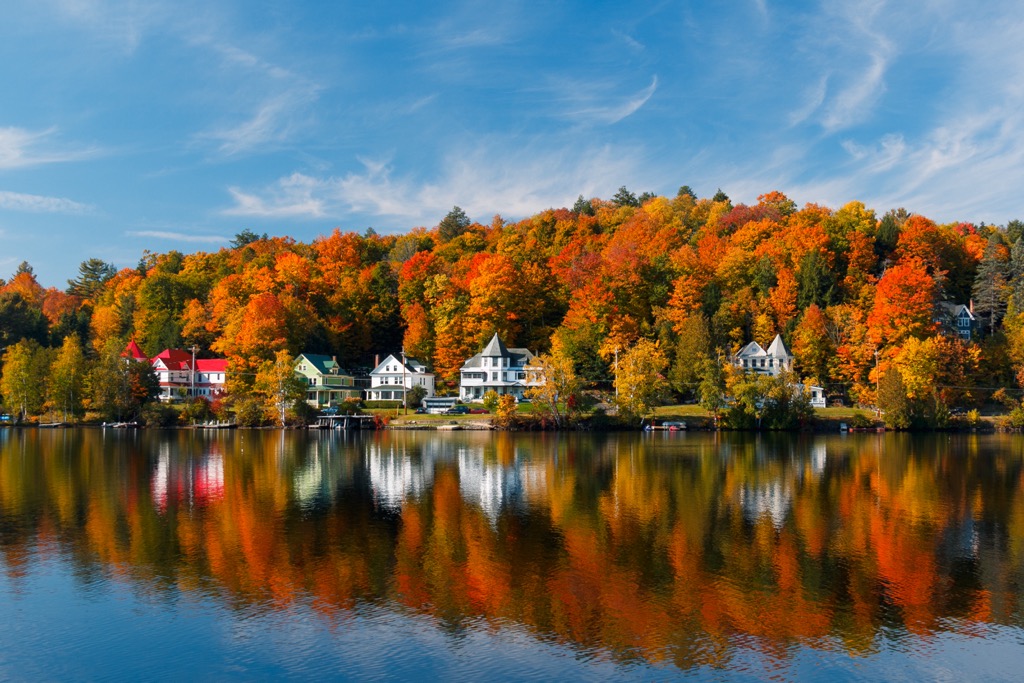
Adirondack Park was established in 1892 and in 1895 received constitutional protection to remain “forever wild”. Some mountains in the region, including Debar Mountain, have fire towers erected at the summit. These fire towers were used for nearly a century as a watchout and early alert system for forest fires. They were phased out in the 1970s.
In addition to hiking trails, there are a number of biking trails in the forest. Electric bicycles are not allowed on trails where public motorized access is prohibited. Visit the state’s Debar Mountain Wild Forest website for a full list of hiking, biking, riding, boating, fishing, and camping options.
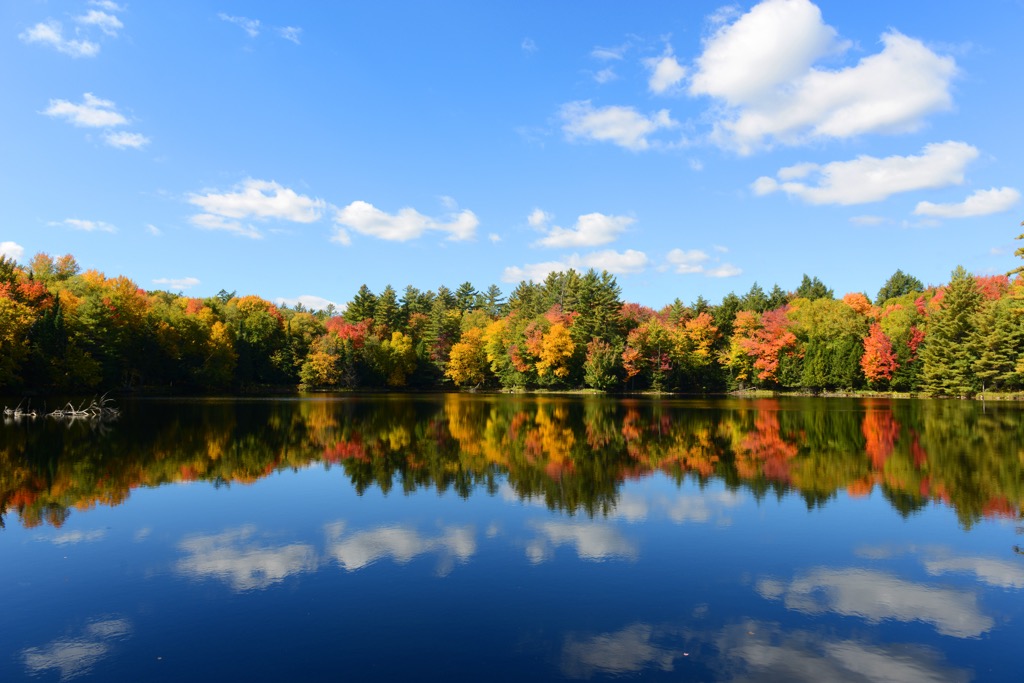
The 3.7 mi (6 km) trail leaves from Meacham Lake Campground and climbs 1,725 ft (525 m) in elevation to reach the summit. This hike is strenuous with the majority of elevation gain coming the the second half of the trail. The last half mile (0.8 km) alone gains 800 ft (245 m).
The trail to Loon Lake Mountain is 2.8 mi (4.5 km) and gains 1,600 ft (490 m) in elevation. There is a fire tower on the summit but it is not currently open to the public. It was originally constructed of wood in 1912 and later replaced by a steel version in 1917. Fire towers placed on high mountain vantage points were used for over a century as an early way to detect wildfires.
D&H Rail Trail
The D&H Rail Trail runs 4 mi (6.4 km) through wetlands, brooks, ponds, and boreal habitats. This flat path is popular with birders, dog walkers, and leisurely bikers.
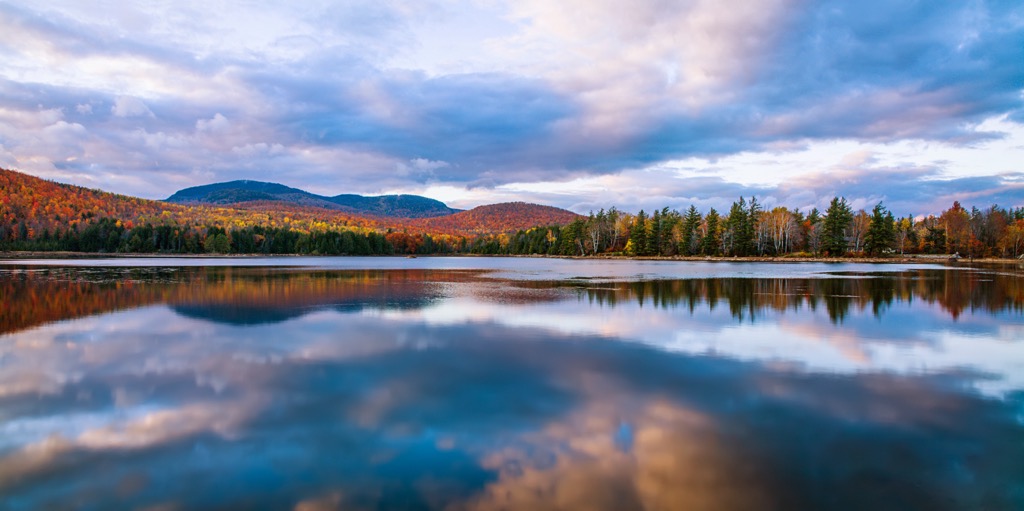
The wild forest and surrounding state parks offer numerous developed and primitive campsites and RV hookups. Several towns lie close to Debar Mountain Wild Forest and visitors to the area can find all amenities they need here. The closest big city is Albany, a 3.5 hour drive to the south.
Located 45 minutes from Loon Lake and one hour from Debar Mountain, the town of Plattsburgh is a convenient town to access the wild forest. The town, with a population of 19,500 people, sits on the western banks of Lake Champlain and is home to one branch of the State University of New York.
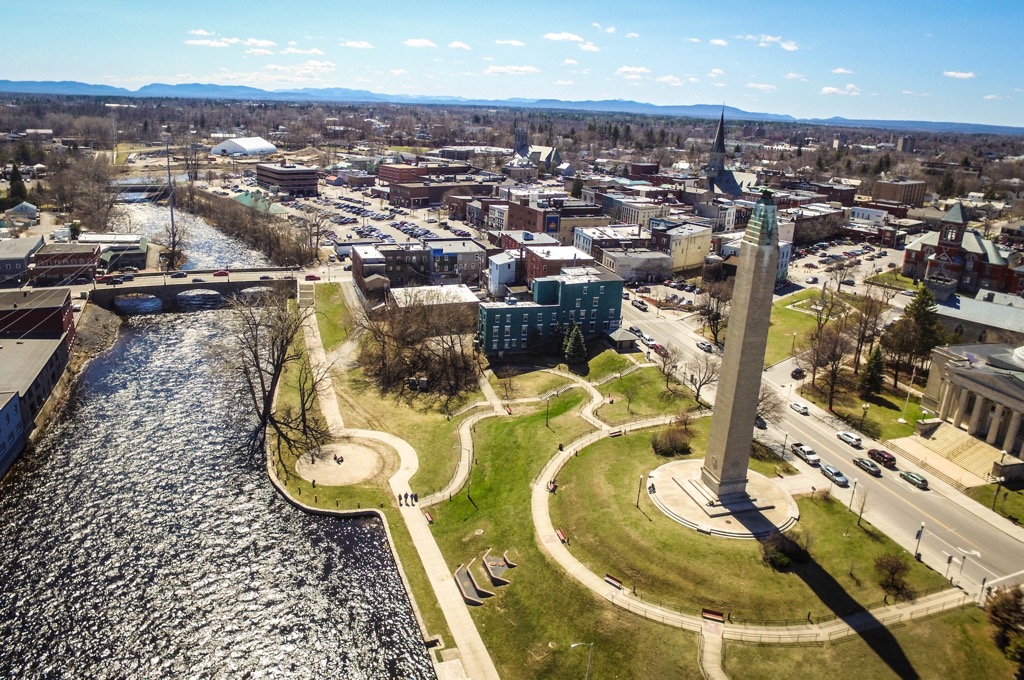
While in town, it is easy to take advantage of the lake by boating, paddling, or going fishing. If not out exploring the many trails and forests surrounding town, visitors can grab a drink at a local brewery or cider house, or explore intimate local farm eateries with fresh farm-to-table options. Guests in town can find all amenities and choose to stay over in budget motels, hotels, or rental properties.
Located 30 minutes to the north of Debar Mountain, the town of Malone is home to 14,000 residents. The small town nestles between forest, farmland, and lakes. Local events range from fishing competitions to concert series. Those passing through can enjoy scenic walking trails around town or relax on the golf course.
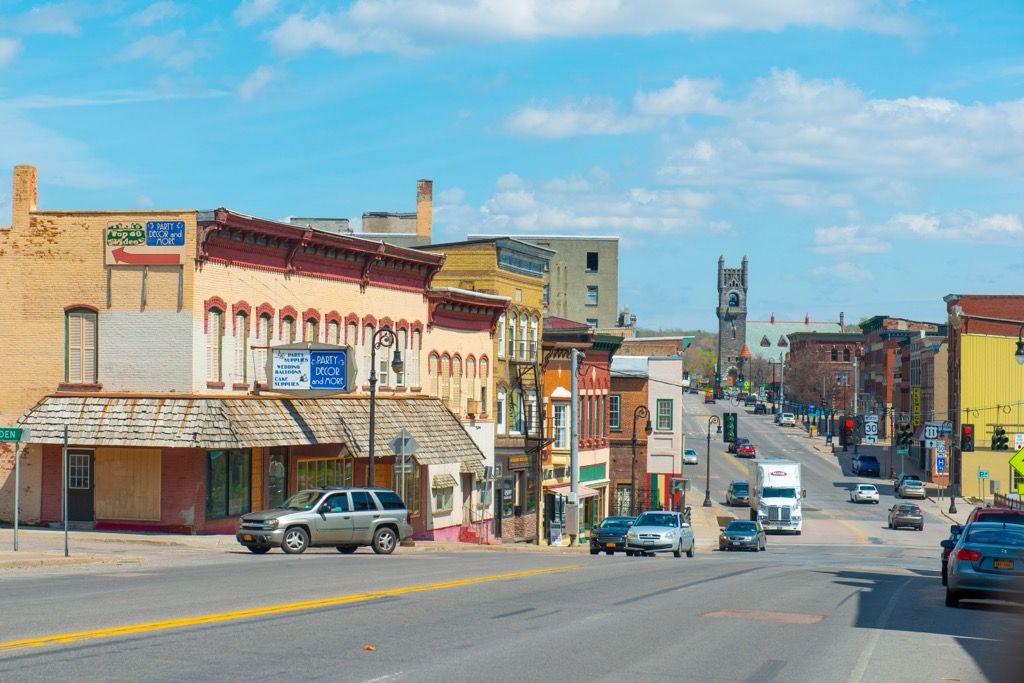
Just outside of town, visitors can make the most of the rural setting by supporting agritourism and visiting local farms for fresh food, homemade products, and to visit some animals. Most restaurants are taverns, breweries, and diners offering American classics. Accommodation available includes budget motels and hotels.
With a population around 97,000 people, Albany has both a historic and hip charm. It lies only 3.5 hours away by car from Debar Mountain Wild Forest. History buffs can explore the city’s journey from Dutch settlement to state capital through museums and historic homes. Explore the surrounding area by cruising along the Hudson River, walking the trails at the Albany Pine Bush Preserve, or visiting Thompson Lake State Park or Howe Caverns.

Those looking to explore by culinary means will not be disappointed. A plethora of venues selling craft beverages exists, and dining options range from fine dining to international to southern and soul food. If you’re planning on staying over, choose from hotels, B&Bs, or nearby campsites to make the most of the city and its beautiful surroundings.
Explore Debar Mountain Wild Forest with the PeakVisor 3D Map and identify its summits.
